Paper, An introduction to biomimetics: A structural viewpoint
Biomimetics is a newly emerging interdisciplinary field in materials science and engineering and biology in which lesson learned from biology form the basis for novel technological materials. It involves investigation of both structures and physical functions of biological composites of engineering interest with the goal of designing and synthesizing new and improved materials. This paper […]
Using CRISPR gene editing, rats with higher levels of oxytocin were more likely to be social and try to meet new rats.
“In a word, the ability to meet a new friend, transform the episodic information into memory, and store it for a long time could be partially regulated by […]
Bio. Discoveries Translated into Technology
Ron Fearing is an EECS professor at UC Berkeley. His research interests include robotics, gecko adhesion, bioinspired robots, and mobile milli-robots. His current work on small “milli-robots” lies in developing their abilities to run, jump, and crawl. Among other things, he’s worked on “tactile sensing” and “parallel nano-grasping (gecko adhesion).”
This course critically examines the mindset, skillset and toolset associated with design and interweaves readings and presentations on design methods, strategy, and the history of design and technology. Approaching design methods, cultures, and ethics through a triptych of framings (past, present, and future), students will build proficiencies to confidently move across, […]
Assistant Professor Wim van Rees and his team have developed simulations of self-propelled undulatory swimmers to better understand how fish-like deformable fins could improve propulsion in underwater devices.
Learn more (opens external site)
Organization: Undergraduate CRISPR Journal Club, UC Berkeley
Our undergraduate journal club covers CRISPR genome-editing technology, basic research uses, and real-world applications. The seminal papers we’ll discuss reveal core concepts and key experiments, touching on a range of topics, from the foundational development of CRISPR to its use in treating genetic diseases and engineering agriculture.
We bring in guest […]
Youth Design Challenge, Biomimicry Institute, Global
Registration Deadline: March 1, 2022
Submission Deadline: April 1, 2022
The Youth Design Challenge is open to all middle school and high school students interested in competing. Students can either submit projects individually or form groups of up to eight students […]
A team of researchers at MIT who were inspired by the underbelly of lobsters recently fabricated a new kind of hydrogel-based material that is strong, stretchy, and can withstand a remarkable amount of wear and tear. These researchers took inspiration from lobsters because of the impressive characteristics […]
Spark Awards Design Competition
The Spark Awards Competitions is a competition for designers, which UC Berkeley students have participated in. It focuses on eight design categories: product, space, concept pro, cleantech, digital, experience, graphic, health, package, student, and transport/mobility design. Although they have yet to add a category for bio-inspired design, […]
Paper, Manta Ray Inspired Microplastic Filters
Microplastic particles (MPs) have been identified as a potentially emerging threat to water environment and human health. It is thus an urgent challenge to develop facile and efficient methods for removing MPs from surface water and even ground water. Herein, we report a series of biomimetic gill-inspired membranes (BGIMs) with oblique […]
Most wood glues use formaldehyde, which is toxic and not sustainable. “When these formaldehyde-based adhesives are used in the production of plywood and particle board, formaldehyde is released in a process called off-gassing,” which can cause irritation and affect the long-term health of people with frequent exposure. […]
3D Printing and Design is a decal that provides an introduction to 3D modeling with Autodesk Fusion 360 and 3D printing technology.
Learn more (opens external site)
“Distributed search problems are ubiquitous in Artificial Life (ALife). Many distributed search problems require identifying a rare and previously unseen event and producing a rapid response. This challenge amounts to finding and removing an unknown needle in a very large haystack. Traditional computational search models are unlikely to find, nonetheless, appropriately […]
Bioengineering Honor Society, Global
The Bioengineering Honor Society is hosting its 9th annual BioEHSC™, a Bioengineering High School Competition! We’re looking for students like you who are willing to mentor teams. Mentors meet with their team weekly via email or video chat, supporting and guiding the team through the 7-week research/design period. On average, mentors […]
Organization: The Alt: Meat Lab, Berkeley
The Alt:Meat Lab is housed at the Sutardja Center for Entrepreneurship & Technology at UC Berkeley’s College of Engineering, and is comprised of the Lab and a project driven class offered to undergraduate and graduate students. It aims to connect students, entrepreneurs, venture capitalists and industry leaders […]
While animals generally move through the aquatic environment by propelling themselves through the water or walking on submerged substrates, some have evolved the unique capacity to move along the water–air interface. This is because cohesive forces between water molecules cause the surface to be in tension, providing a physical substrate that […]
Organization: OStem, Berkeley
OStem is a club at UC Berkeley that brings together LGBTQ+ students who are studying STEM. Recently, OStem had a 3D Printing Workshop where students were able to learn more about setting up designs on a 3D printer.
Learn more (opens external site)
Strong and tough natural composites such as bone, silk or nacre are often built from stiff blocks bound together using thin interfacial soft layers that can also provide sacrificial bonds for self-repair. Here we show that it is possible to exploit this design […]
Organization: Undergraduate Biology Journal Club, UC Berkeley
Drawing inspiration from the journal clubs in the research labs they currently work in, the envision this organization as a place for undergraduate students who are interested in research to meet regularly and discuss scientific research papers in the biological sciences among peers with roughly the same scientific background. Our vision […]
Berkeley Innovation, Berkeley
Berkeley Innovation is a human-centered design consultancy at UC Berkeley. They work with industry clients to complete projects that range from UI/UX design to spatial, physical, and other types. They are also passionate about design education and making resources more accessible, through the Human-Centered Design DeCal, workshops, […]
In recent decades, synthetic plastic polymers have been the most practical and economical solution for packaging applications due to their low cost, availability, excellent optical, mechanical and barrier properties and resistance against water. However, most of the plastics used for packaging are hardly biodegradable. With a view to a circular economy, […]
A ubiquitous biological material, keratin represents a group of insoluble, usually high-sulfur content and filament-forming proteins, constituting the bulk of epidermal appendages such as hair, nails, claws, turtle scutes, horns, whale baleen, beaks, and feathers. These keratinous materials are formed by cells filled with keratin and are considered ‘dead tissues’. Nevertheless, they are among the […]
Administration of drugs by the buccal route has attracted a lot of attention in recent years. But, developing systems with adequate adhesion under wet conditions and drug bioavailability remains a challenge. In this article, they propose a mussel-inspired mucoadhesive film as a solution and demonstrate that the adhesion mechanism of this […]
Epclusa for Hepatitis C
This article is about Epclusa, a new treatment for Hepatitis C, a very effective new treatment for people with Hep C. The drug is a direct’acting antivral oral tablet. One of my best friends whose dad suffers from Hep C, just started this treatment and it has been unbelievably effective for […]
An international research team from the US, Canada, Germany, and Singapore have developed a miniature, implantable light-sheet generator that can be placed in a living animal’s brain. This device, also known as a photonic neural probe, is used to image brain activity in animals. Traditionally, this technology […]
The notion of mimicking natural structures in the synthesis of new structural materials has generated enormous interest but has yielded few practical advances. Natural composites achieve strength and toughness through complex hierarchical designs that are extremely difficult to replicate synthetically. We emulate nature’s toughening mechanisms by combining […]
Anti-freezing gel materials are an important class of materials that have potential applications in many areas of tissue engineering, soft robot, wearable devices in which ice crystal cannot form or the ice crystal growth is damaging at subzero temperatures. In the increasing need for fabrication of new and innovative anti-freezing soft materials, natural biological systems […]
Many applications in plant biology requires editing genomes accurately including correcting point mutations, incorporation of single-nucleotide polymorphisms (SNPs), and introduction of multinucleotide insertion/deletions (indels) into a predetermined position in the genome. These types of modifications are possible using existing genome-editing technologies such as the CRISPR-Cas systems, which require induction of double-stranded breaks in the target […]
Rolf Mueller of Virginia Tech has been studying bat ears in relation to human ears to see how bats locate the origin of a sound. He has been able to extract ideas from this natural technology to make a device capable of locating sound in a similar way bats do. This […]
Vine Robots are soft continuum robots design with low-cost fabrication in mind and for the navigation of difficult environments. Unlike traditional robots, which move through surface contact to walk or run, the vine robot relies on growth for movement. Much like a vine […]
The study and imitation of the biological and mechanical systems present in nature and living beings always have been sources of inspiration for improving existent technologies and establishing new ones. Pursuing this line of thought, we consider an artificial graft typical in the bone reconstruction surgery with […]
Caudo-rostral whole-field visual motion elicits forward locomotion in many organisms, including larval zebrafish. Here, we investigate the dependence on the latency to initiate this forward swimming as a function of the speed of the visual motion. We show that latency is highly dependent on speed for slow […]
A team of engineers at Cornell has developed an actuator that can function in a similar manner to muscles. The actuator’s design was inspired by octopus tentacles, and doesn’t require any complex parts. It was made using 3D printing and uses pneumatics and pressure differences to control […]
Artificial recapitulation of the hierarchy of natural protein fibers is crucial to providing strategies for developing advanced fibrous materials. However, it is challenging due to the complexity of the natural environment. Inspired by the liquid crystalline spinning of spiders, we report the development of natural silk-like hierarchical […]
News, Electric Eel-inspired power source
A new flexible, transparent electrical device inspired by electric eels could lead to body-friendly power sources for implanted health monitors and medication dispensers, augmented-reality contact lenses, and countless other applications, researchers report.
When in ground effect, bats are able to fly aerodynamically in a manner that is much more efficient than our own machines. The ripples in the wings themselves allows for significant conservation of energy and could be utilized in many of our own machines as well.
The program consists of three modules: biodigital, synthetic biology and biomimicry. Each module started with inspirational talks, followed by hands-on laboratory session/fieldwork, and finished with design challenges that encourage the students to ideate and prototype their ideas. The outcomes of Hack Biodesign showed that we could stimulate the students to develop novel interdisciplinary projects
Scientists have long sought to replicate the shock-absorbing and lubricating properties of cartilage, with such a material undoubtedly having a range of applications in engineering and beyond. However, the bi-phase nature of cartilage – whereby it exists in both solid and fluid states, depending on the presence of synovial fluid in […]
Careers- How To Sell Your Science
A series of interview questions with prominent biologists and medical researchers, designed to help science students find jobs after graduation by teaching them how to present themselves and the research they’ve done in the best possible light. This should be useful to anyone seeking an internship or a laboratory position.
Inspired by the workings of a bat’s ear, Rolf Mueller, a professor of mechanical engineering at Virginia Tech, has created bio-inspired technology that determines the location of a sound’s origin. Mueller’s development works from a simpler and more accurate model of sound location than previous approaches, which have traditionally been modeled […]
Learn about our two Decals!
 Click here to find out more about our Fall Bioinspired Design Decal and our Spring Bioinspired Design in Action Decal – ALL MAJORS are welcome.
Click here to find out more about our Fall Bioinspired Design Decal and our Spring Bioinspired Design in Action Decal – ALL MAJORS are welcome.Berkeley BioDesign Community
 Click here to learn about the BioD: Bio-Inspired Design @ Berkeley student organization or here to signup for more info.
Click here to learn about the BioD: Bio-Inspired Design @ Berkeley student organization or here to signup for more info.Search
Student Login

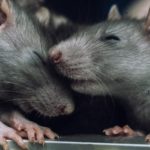




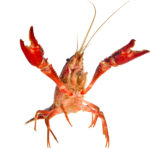

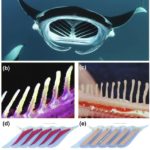
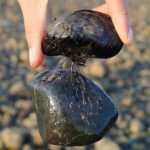
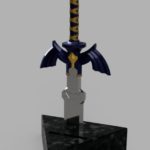
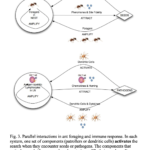

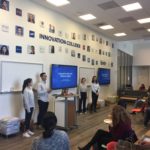




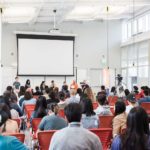

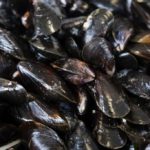
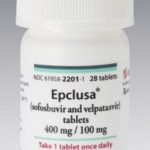
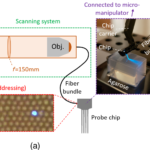
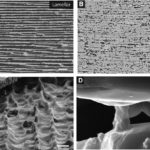
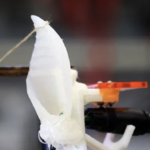
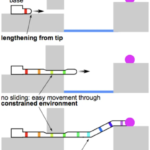
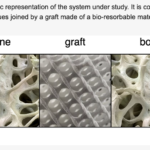
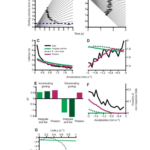
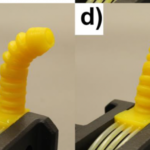
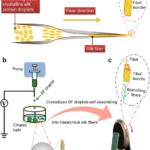
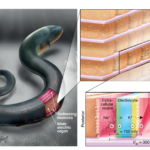
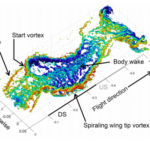
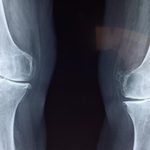
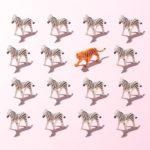
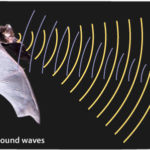


I imagine that the neurological circuits underlying these processes are governed by both 2d spacing maps with their brains as…
to reduce the impact of car accidents, it may be possible to study the force diverting physics of cockroaches to…
you see this type of head-bobbing stability in many avian creatures related to pigeons like chickens. the head ability to…
not like they taught horses how to run! this is an example of convergent evolution where both sea creatures and…
The brain functions in a similar way with neuronal connections. our brains are able to utilize the multiplicity of connections…